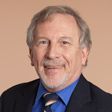A Renewed Global Focus On Helping the Hungry
Rebounding global ag commodity prices add a sense of urgency to fighting hunger.

With world hunger a growing problem, the United States and other wealthy nations are stepping up to the plate with more emergency food aid as well as promises to share technology and know-how so poor countries can do more to help their farmers grow more food.
They’ve pledged to provide $22 billion by 2012, including $3.5 billion from the U.S. for food exports plus initiatives to bolster farming in poor nations. The needs are great. The number of underfed and starving people in Africa, Asia and elsewhere will stay above a billion in 2010, a level reached for the first time this year.
But the goal of rich nations to halve world hunger by 2015 is a pipe dream. Developed nations have plenty of problems at home that require attention, preventing them from doing even more to help hungry people around the world.
From just $107.88 $24.99 for Kiplinger Personal Finance
Become a smarter, better informed investor. Subscribe from just $107.88 $24.99, plus get up to 4 Special Issues

Sign up for Kiplinger’s Free Newsletters
Profit and prosper with the best of expert advice on investing, taxes, retirement, personal finance and more - straight to your e-mail.
Profit and prosper with the best of expert advice - straight to your e-mail.
Private interests are pitching in, too. Bayer CropScience, for example, is teaming up with Asia’s largest agricultural research institute, based in the Philippines, to form a database of more than 2,000 rice strains to speed the arrival of new varieties and fight bacterial blight. Agricultural giant Monsanto is donating its biotech savvy plus its white corn seed to help a partnership in eastern Africa develop drought tolerant varieties. And the Bill & Melinda Gates Foundation has pledged $1.4 billion, with $120 million awarded in grants so far, to invest in better seeds, training, market access and policies that support small farmers. Bill Gates, the foundation’s cochair, says that “helping the poorest small-holder farmers grow more crops and get them to market is the world's single most powerful lever for reducing hunger and poverty.” The foundation’s initial grants are being targeted to produce higher yielding varieties of sorghum and millet as well as to new varieties of sweet potatoes that resist pests and have a higher vitamin content.
Rebounding global ag commodity prices will make it even harder for poor nations to feed hungry people. The index kept by the United Nations’ Food and Agricultural Organization (FAO) is at its highest level since September 2008. For dairy items, it’s up 80%. Even the recent recession hasn’t had much impact on prices in poor nations, according to a second FAO index that tracks the prices of 864 basic foods in 68 developing nations. In that food market measure, prices remain about 25% higher than two years ago in two-thirds of the countries included in the index.
Note that the FAO is also actively involved in helping developing nations overcome hunger. A joint effort by the FAO and Germany, for example, has built 45,000 small silos in 16 countries for local storage of basic foods, avoiding spillage, insects and waste.
Long term, ramped-up efforts will do more than just address hunger. They’ll help developing nations to expand their wealth, which in turn will allow them to expand trade with the U.S. and other developed nations.

Profit and prosper with the best of Kiplinger's advice on investing, taxes, retirement, personal finance and much more. Delivered daily. Enter your email in the box and click Sign Me Up.

-
 Is Mechanical Breakdown Insurance Better Than an Extended Car Warranty?
Is Mechanical Breakdown Insurance Better Than an Extended Car Warranty?More insurers are starting to offer mechanical breakdown insurance to new car owners. What is it and should you buy it?
-
 What to Do When You Bank Lowers Your APY
What to Do When You Bank Lowers Your APYWhy banks lower APYs, options you can explore when it happens and whether more rate cuts are on the horizon.
-
 Forget Financial Forecasts: Focus on These 3 Goals for Success
Forget Financial Forecasts: Focus on These 3 Goals for SuccessWe know the economy is unpredictable and markets will do what they do, no matter who predicts what. Here's how to focus on what you can control.
-
 The Kiplinger Letter's 10 Forecasts for 2026
The Kiplinger Letter's 10 Forecasts for 2026The Kiplinger Letter Here are some of the biggest events and trends in economics, politics and tech that will shape the new year.
-
 Disney’s Risky Acceptance of AI Videos
Disney’s Risky Acceptance of AI VideosThe Kiplinger Letter Disney will let fans run wild with AI-generated videos of its top characters. The move highlights the uneasy partnership between AI companies and Hollywood.
-
 AI Appliances Aren’t Exciting Buyers…Yet
AI Appliances Aren’t Exciting Buyers…YetThe Kiplinger Letter Artificial intelligence is being embedded into all sorts of appliances. Now sellers need to get customers to care about AI-powered laundry.
-
 What to Expect from the Global Economy in 2026
What to Expect from the Global Economy in 2026The Kiplinger Letter Economic growth across the globe will be highly uneven, with some major economies accelerating while others hit the brakes.
-
 The AI Boom Will Lift IT Spending Next Year
The AI Boom Will Lift IT Spending Next YearThe Kiplinger Letter 2026 will be one of strongest years for the IT industry since the PC boom and early days of the Web in the mid-1990s.
-
 Amid Mounting Uncertainty: Five Forecasts About AI
Amid Mounting Uncertainty: Five Forecasts About AIThe Kiplinger Letter With the risk of overspending on AI data centers hotly debated, here are some forecasts about AI that we can make with some confidence.
-
 Worried About an AI Bubble? Here’s What You Need to Know
Worried About an AI Bubble? Here’s What You Need to KnowThe Kiplinger Letter Though AI is a transformative technology, it’s worth paying attention to the rising economic and financial risks. Here’s some guidance to navigate AI’s future.
-
 Will AI Videos Disrupt Social Media?
Will AI Videos Disrupt Social Media?The Kiplinger Letter With the introduction of OpenAI’s new AI social media app, Sora, the internet is about to be flooded with startling AI-generated videos.